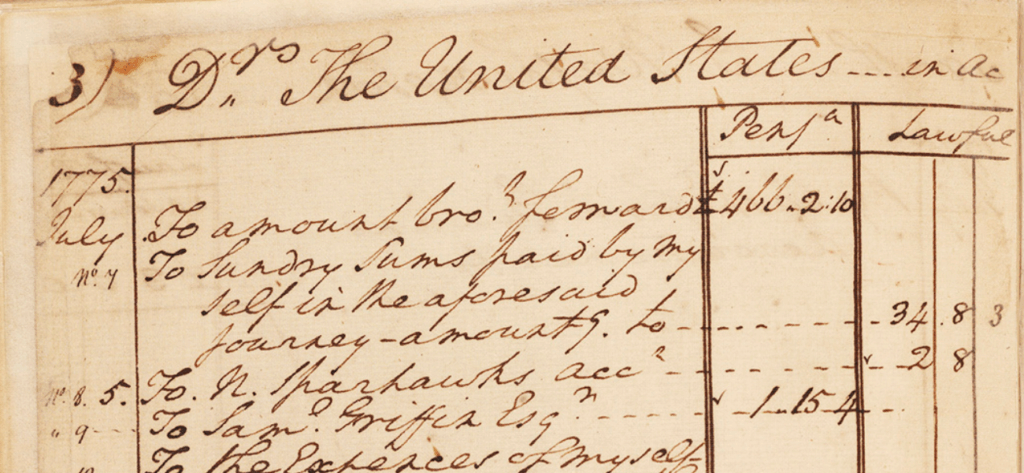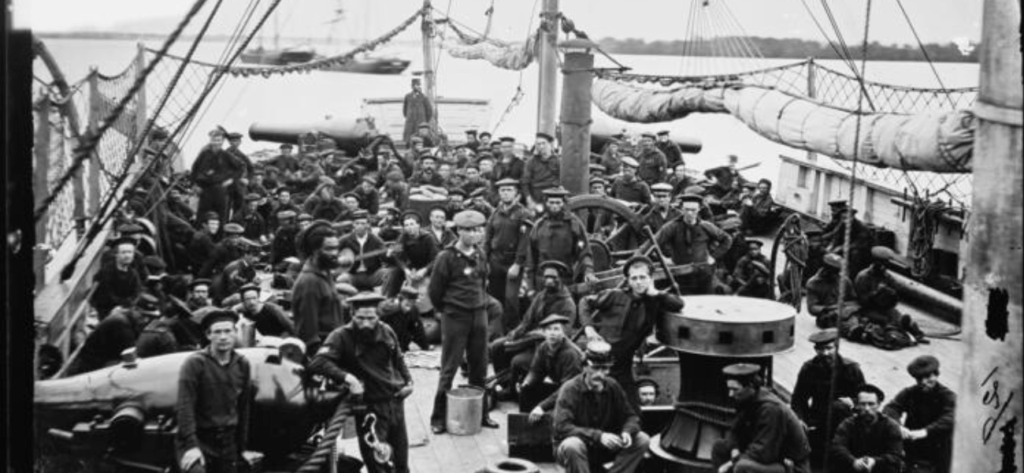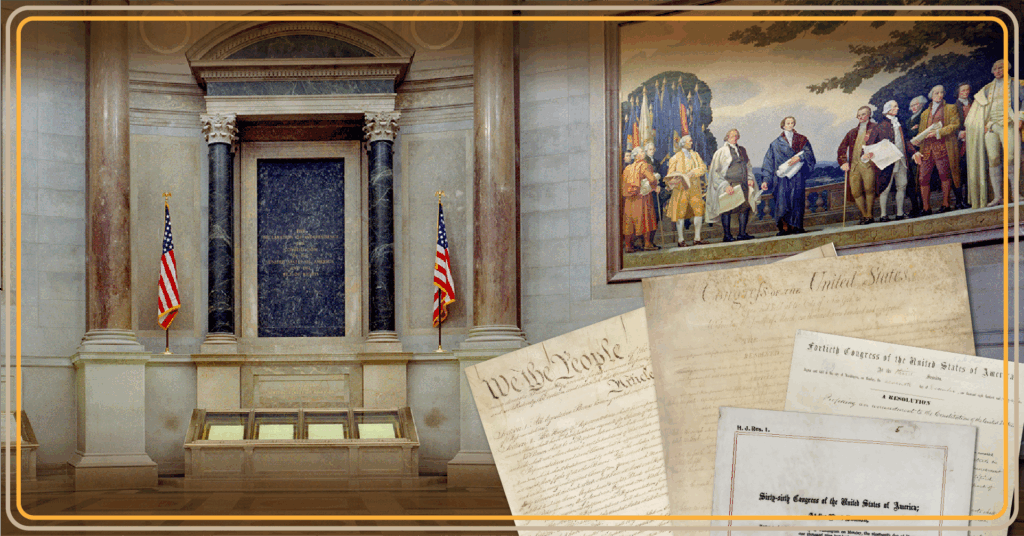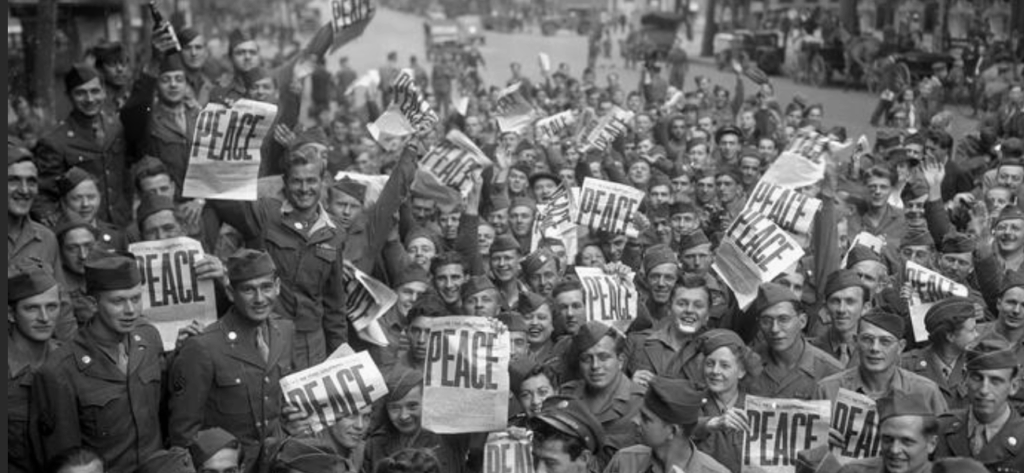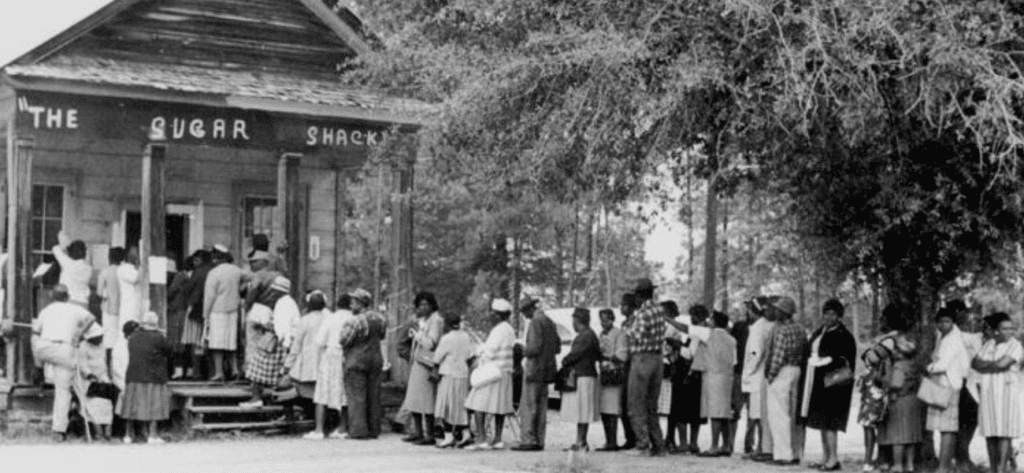On April 30, 1789, George Washington placed his hand upon a Bible and took the oath as the first President of the United States. The oath was administered on a second-floor balcony of Federal Hall, above a crowd assembled in the streets to witness this historic event. President Washington and members of Congress then retired to the Senate Chamber, where Washington delivered the first inaugural address to a joint session of Congress. Washington humbly noted the power of the nation’s call for him to serve as president and the shared responsibility of the president and Congress to preserve “the sacred fire of liberty” and a republican form of government.
After concluding his remarks, the President and Congress proceeded through crowds lined up on Broadway to St. Paul’s Church, where a service was conducted. Social gatherings and festivities closed the nation’s first inaugural day. Subsequent presidential inaugurations took place on March 4 (or March 5 when the 4 fell on a Sunday), until the 20th Amendment changed the date to January 20, beginning in 1937.
The first and last pages of George Washington’s handwritten inaugural address were on display in the “Featured Documents” exhibit in the East Rotunda Gallery of the National Archives in Washington, DC, from January 5 through January 25, 2017. The Washington Inaugural Bible – on loan from the St. John’s Lodge No.1, Ancient York Masons – joined the exhibit on January 7.
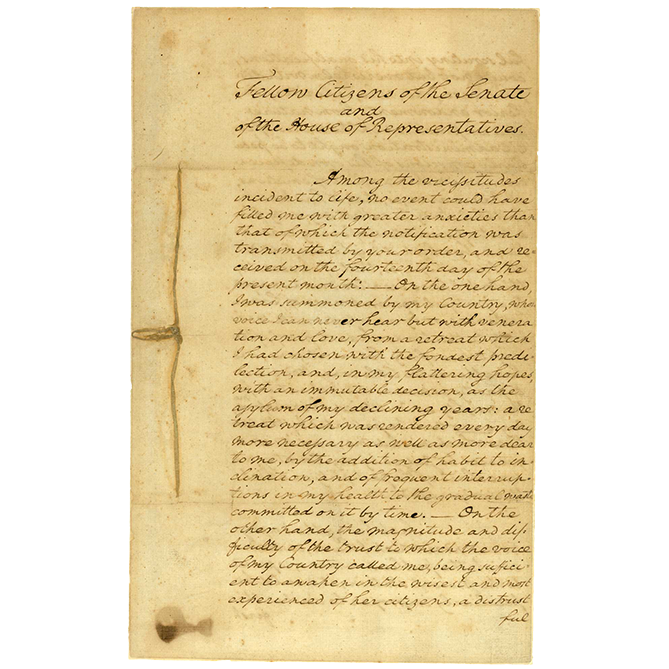
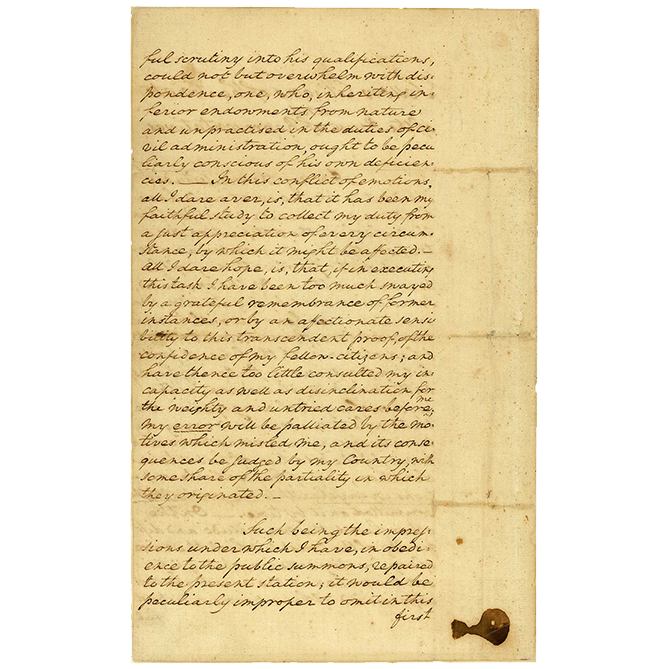
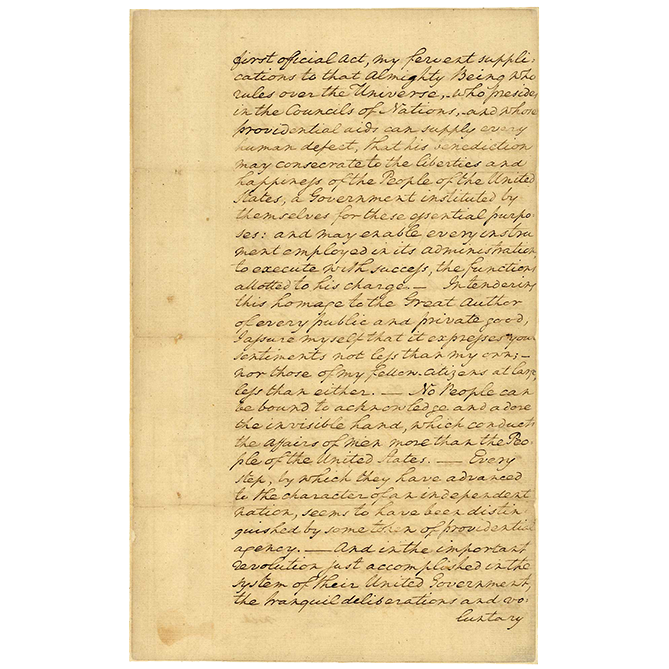
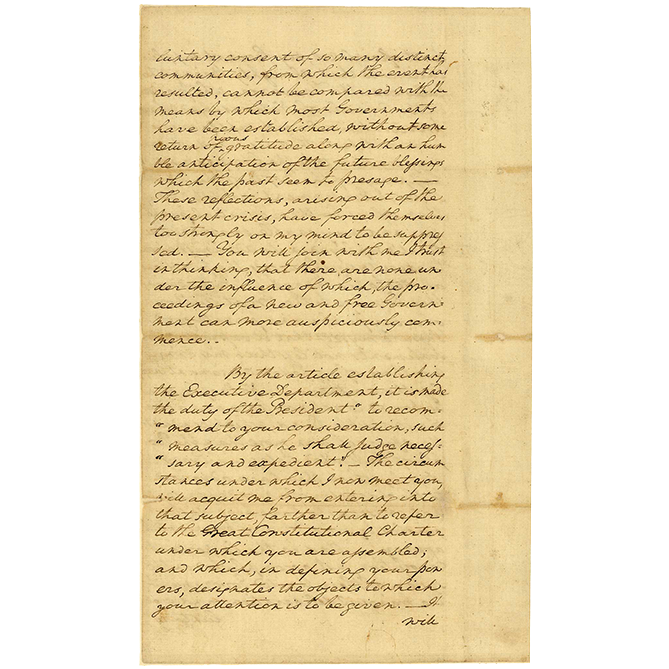
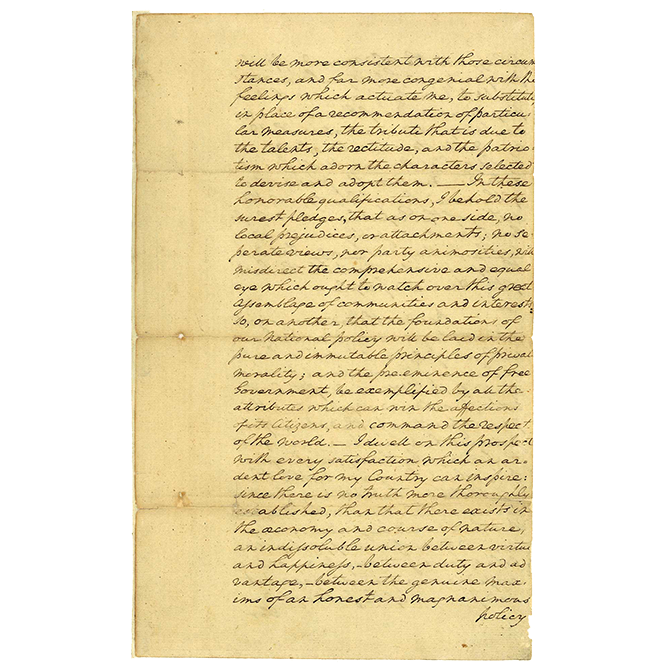
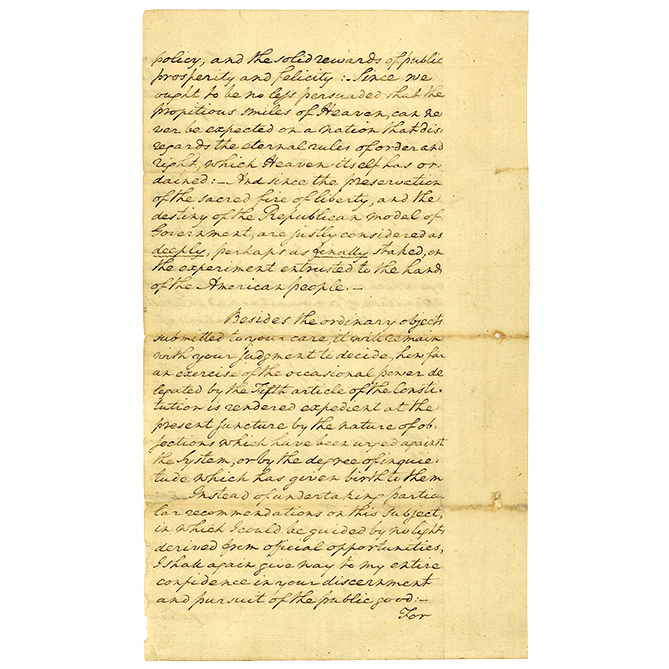
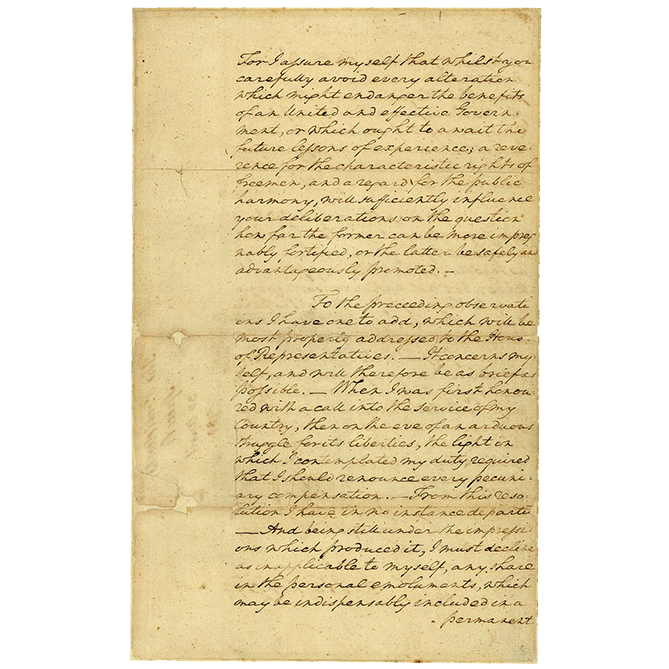
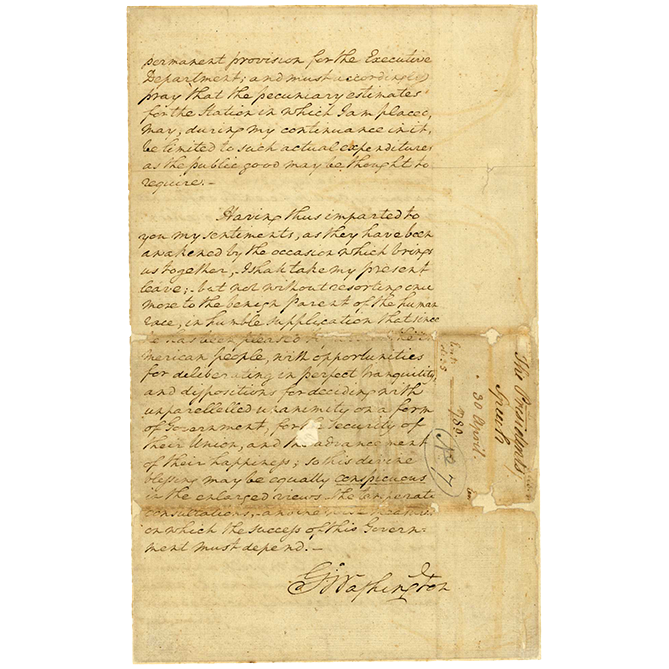
George Washington’s First Inaugural Address
National Archives, Records of the U.S. Senate
This”Featured Document” exhibit was made possible in part by the National Archives Foundation through the generous support of Ford Motor Company Fund.
